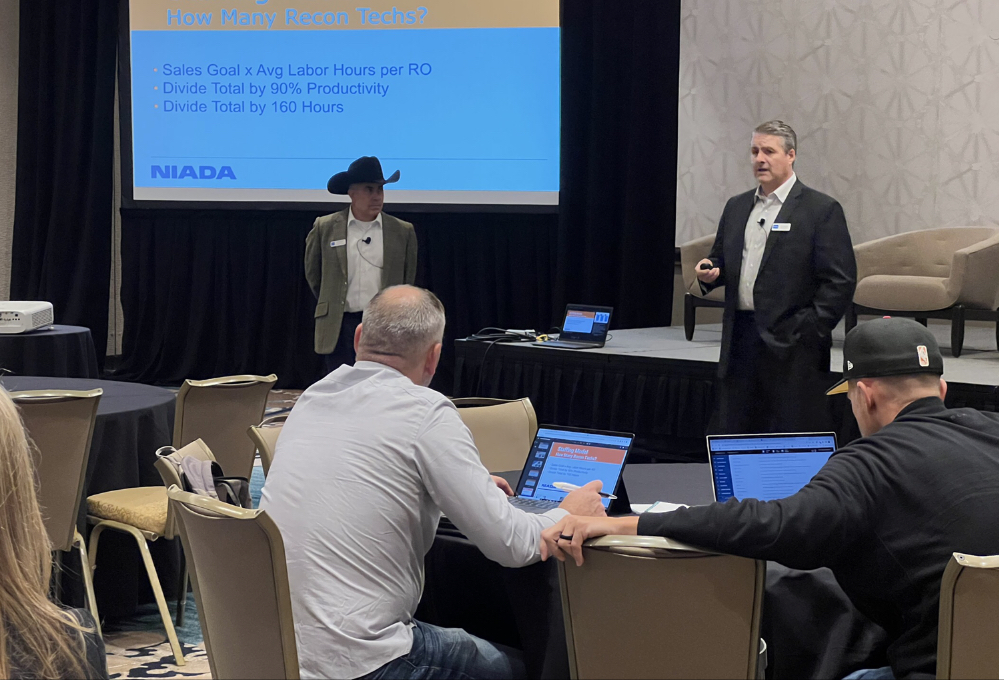Ben Goodman’s opening question Wednesday produced a brief laugh from the crowd.
“Anyone have enough cars on the lot?” Goodman asked.
“We’re going to talk about getting cars to the front lot.”
With dealers looking for a path out of continually facing tight inventory, the NIADA Senior 20 Group Moderator Ben Goodman led dealers through constructing an effective reconditioning program during the opening session of the Business Operations Workshop at the BHPH Super Forum at the Austin Hilton.
Goodman’s reconditioning program preceded workshops led by fellow Senior 20 Group Moderators Bill Elizondo and Ed Curry on developing a sales process checklist and collections.
Elizondo assisted Goodman in his presentation on reconditioning. Between the two they have 60 years of experience in the BHPH sector.
To start, Goodman and Elizondo stressed the need to deliver safe vehicles to customers.
“You want its life to extend through the life of the contract,” Goodman said. “If the car doesn’t last the life of the contract, they don’t pay.”
Elizondo added: “The happier they are, they are going to pay.”
A successful reconditioning plan starts with assembling a team of techs dedicated to the process. Goodman said a good rule of thumb is hiring one tech per 10 to 12 sales per month. The number of reconditioning techs will also depend on the garage’s productivity.
For a dealership averaging 30 to 35 sales per month, three techs are likely needed and perform different roles. One will be in charge of checklisting new arrivals, with a vehicle taking approximately an hour to go through thoroughly.
“You need to do inspections as soon as a car gets there. Stop everything you’re doing and checklist the car,” Goodman said.
He added, the earlier an issue is diagnosed, the quicker proper action can be taken.
A second tech will perform assembly and a third will be the post-sale tech.
“They should be able to talk to the customer,” Goodman said.
Goodman provided dealers with the following 10-step reconditioning process: check-in; complete vehicle inspection; create repair order estimate; establish an approval process; order parts; receive and verify parts; hang parts; quality control check; detail the car and finally the sales lot turnover.
The quality control check is essential and includes driving the vehicle.
“You want to make sure it’s safe and reliable, but you don’t want to drive costs up,” Goodman said.




